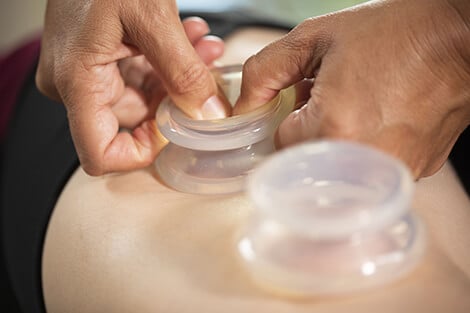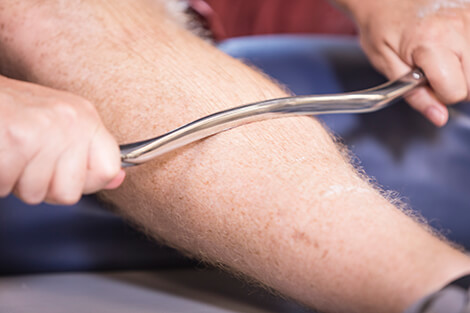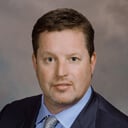Advanced Techniques and Treatment Strategies
The right tools and experience to help reach your goals
Combining expert care, evidence-informed practice and advanced technologies, Kessler Rehabilitation Center’s physical and occupational therapists help you achieve your best outcome. Every patient responds differently to treatment. Whether you’re recovering movement following an injury, improving range of motion after surgery or enhancing athletic performance, our team is committed to identifying the right therapist and care plan for your diagnosis and overall goals.
Your treatment may consist of manual therapy and exercises designed to help meet your goals. At Kessler Rehabilitation Center, we also offer advanced techniques and treatment strategies that our therapists may utilize in your care.
-
Recover, prevent injury and enhance performance
Kessler Rehabilitation Center offers the AlterG® Anti-Gravity Treadmill to get you moving again. The treadmill, along with our skilled therapists, can help you achieve your health and fitness goals by reducing stress to your feet, ankles, shins, knees, hips and back.
The AlterG uses NASA-based anti-gravity technology to help rehabilitate your lower extremities, prevent injury and enhance performance.
What to expect
The AlterG’s technology allows patients to run and walk longer distances without bearing their entire body weight. In fact, 80% of an individual’s body weight can be removed with the AlterG's unweighting capabilities on the lower extremities. This unrestricted, pain-free movement helps to reduce the impact on your body and achieve faster, better outcomes.
Additionally, the AlterG’s real-time gait analytics and live video feedback helps your Kessler Rehabilitation Center therapist to better understand your movement patterns and pinpoint exactly where your pain stops and natural movement feels good.
Based on your therapist’s findings and your personal goals, a customized treatment plan will be created using the AlterG and exercises that will help you to restore and build muscle strength, range of motion, balance and mobility.
Benefits of the AlterG therapy may include:
- Faster injury/surgery recovery
- Conditioning, both aerobic and sport-specific
- Less joint impact/stress during exercise and improved cardiovascular health
- Regain/maintain functionality and mobility
- Preserve natural body movement and aid with fall prevention
Good candidates for the AlterG therapy include:
- Post-operative rehabilitation patients and those with lower-body injuries
- Individuals seeking aerobic conditioning
- Athletes for sport-specific conditioning
- Neurologic patients
- Geriatric patients requiring strength and conditioning
-
Increase strength and reduce joint stress with low intensity exercise
Injury, age or poor physical condition can prevent you from gaining muscle mass. Personalized blood flow restriction (PBFR) training is a form of rehabilitation that helps increase strength with low intensity exercise, putting less stress on your joints.
What to expect
Your physical or occupational therapist will place a cuff around your limb during exercise. The cuff is attached to a compression pump (similar to a blood pressure cuff) that causes it to inflate, keeping the blood in your muscle and temporarily preventing its flow from the area.
A personalized pressure reading is performed to ensure safe training. The amount of pressure applied will depend on your physical condition, strength needs and therapy goals.
Sessions can last from six to 30 minutes. During that time, you will perform various exercises, including strength training and aerobic conditioning.
Benefits of PBFR
As muscles relax and contract during exercise, the device maintains constant pressure, enabling:
- Fewer exercise repetitions
- Use of lighter weights
- Enhanced muscle growth
- Overall strength grains
PBFR training may help:
- Increase muscle size and strength
- Improve cardiovascular capacity
- Decrease joint/tissue stress
Good candidates for PBFR
PBFR can expedite healing and bridge the gap between rehabilitation and recovery. It has been shown to be beneficial for:
- Athletes
- Individuals with limited or restricted mobility
- Post-operative rehabilitation patients or those dealing with pain issues
- Patients seeking pre-surgery strengthening
-
Pain relief for muscles and soft tissue

Treat your muscle and soft tissue problems with cupping therapy at Kessler Rehabilitation Center. Our therapists provide a manual therapy technique called cupping used — along with other therapies — to treat muscle and soft tissue dysfunction.
Available for appropriate patients, from pre-teens through adults, cupping can benefit your affected areas by:
- Decreasing inflammation
- Decreasing muscle spasms
- Decreasing pain
- Improving blood and oxygen circulation
- Improving range of motion
Cupping treatments
Kessler Rehabilitation Center offers two types of cupping therapy: dynamic and static techniques. You and your therapist will select the right technique for you based on the location of your affected muscles and comfort level.
- Dynamic cupping is our most commonly used treatment. During treatment, your therapist will gently apply silicone cups to the affected area. The soft tissue will begin to rise within the cup and develop into a reddish pink color. The therapist glides the cups along your skin using light, medium or strong pressure – based on your personal preference and comfort level. Your therapist will adjust the amount of pressure as therapy progresses.
- Static cupping is typically used to target deeper muscles in the back. Your therapist will place silicone cups on the affected areas and leave them in one place for 2-10 minutes.
Your therapist may recommend you receive cupping therapy once or twice a week, along with other therapies based on your diagnosis, overall goals and the individualized treatment plan created.
-
Effective treatment for muscle, ligament and tendon injuries
Instrument-assisted soft tissue mobilization (IASTM) is a technique we often use in physical therapy. IASTM works like a standard massage, but specialized instruments are used in place of a physical therapist’s hands. These instruments allow more direct treatment of the soft tissues involved with movement. The tissues include:
- Muscles
- Fascia, connective tissue that surrounds and separates muscles
- Ligaments, tissue that connects bones to other bones
- Tendons, tissue that connects muscles to bones
IASTM can involve broad or targeted treatments. The former would be used for large muscle groups, such as an injured back, the latter for an injury to a particular area. By using different tools, angles and pressures, your therapist can focus on a specific layer of soft tissue during treatment.

The Benefits of IASTM
Targeted IASTM treatments can have a number of benefits, such as:
- Faster pain relief
- Improved mobility
- Quicker rehabilitation and recovery
IASTM focuses on specific areas to relieve stiffness and improve range of motion. This allows you to perform exercises your physical therapist recommends to strengthen the injured area, which promotes healing and can help restore your normal function.
A good candidate for IASTM
Anyone with soft-tissue pain, injuries or conditions can benefit from IASTM. These often include athletes, warehouse workers or others who perform a repeated motion many times per day. Some of the many conditions we can treat with IASTM include:
- Excessive scar tissue
- Forms of tendinitis or tendinopathy, including Achilles tendinitis, golfer’s and tennis elbow
- Muscle and ligament strains
- Running injuries, such as plantar fasciitis and iliotibial band syndrome (IT band)
However, some patients are not good candidates for IASTM. If you have a degenerative joint condition, such as arthritis, IASTM may help relieve pain in the tissues surrounding the joint but not in the joint itself. In addition, anyone with the following conditions should not receive IASTM therapy:
- An active form of cancer
- Bone fracture
- Diabetic neuropathy, a type of nerve damage that can occur with diabetes
- Peripheral artery disease (PAD), a circulatory condition that reduces blood flow to the arms or legs
